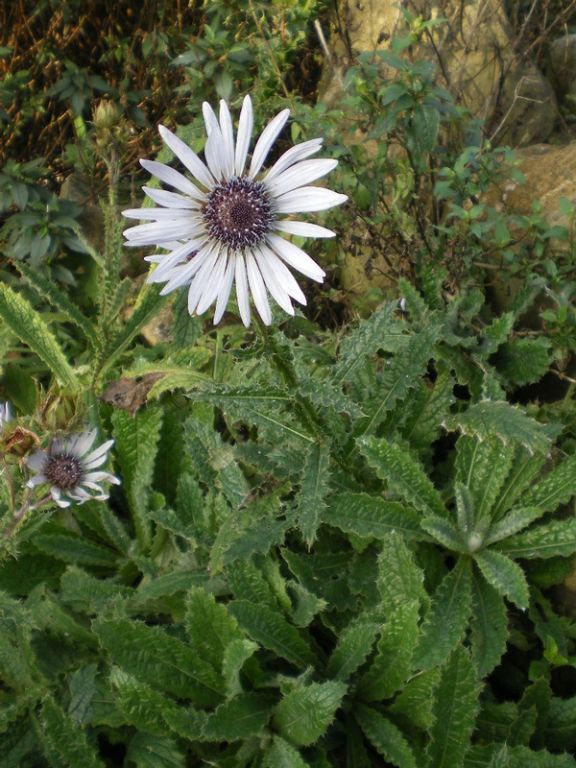Berkheya purpurea

Description: Produces a tight rosette of large prickly foliage like a thistle which are shiny green covered in white almost cobweb like hairs. From this rosette rises a tall stem up to 1 metre which is covered in unusual leafy wings and near the top produces side shoots each with buds which open to large soft pale mauve daisy like flowers. Each flower has a large blotch of darker mauve in the centre of the petals.
Uses: Plant in hot sunny borders. Looks good with grasses and in prairie planting or dry gardens. Associates well with Yucca, hebe and other dry loving plants.
Climate/Position: Full sun
Height/Spread: 80cm clumps up to 1 metre flower stems.
Soil Requirements: Very free draining soil required and certainly not soils which are wet and heavy in winter.
Pruning: Cut the flowering stem after flowering or later in autumn if saved for the attractive seed heads.
Special Requirements:
Additional Interest: he German botanist Ehrhart founded the genus Berkheya in 1788, who named it in honor of the Dutch botanist, Jan le Francq van Berkhey (1729-1812). Berkheya purpurea was first described and named as Stobaea purpurea in 1838 by the French botanist A.P. de Candolle, from a plant specimen collected in 1833 by J.F Drège in the Witteberg. The name was changed to Berkheya purpurea, by M.T. Masters in 1872 (Batten 1986). Originating in Southern Africa in the mountains of the Eastern Cape to the Drakensberg and Lesotho.
